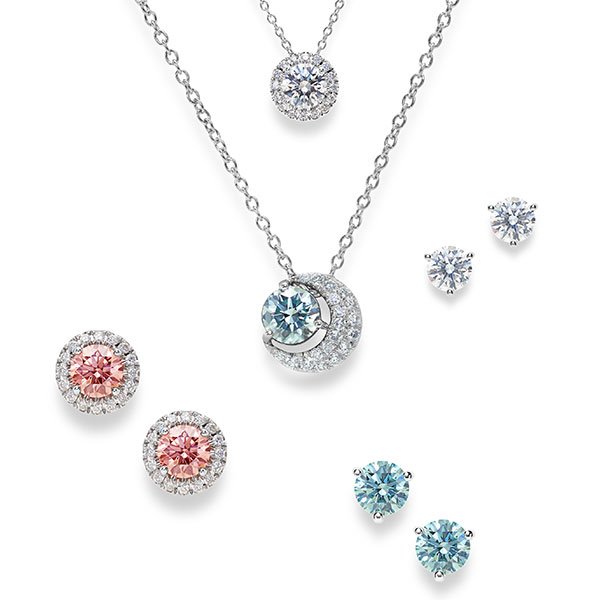When I first started out in jewellery, I used to make lamp-worked beads and I sold my jewellery in various shops and galleries. One of the shops always said to me, ‘no green please. People don’t buy green jewellery.’ Well, times have changed and green is definitely having a renaissance. Of course, if you talk about green stones, the first one that comes to mind has to be emerald. I have to say that I am not a massive fan of the big E; why not? Well, it’s a combination of its price and properties. Emerald is generally a very included kind of stone. Most emeralds have inclusions; gas bubbles, liquid inclusions, minerals and fractures. And oh my goodness; the fractures. It’s not known whether emerald is a generally fractured stone, or whether it’s the extreme processes required to get it out of the ground. Either way, what this means is that emerald tends to be fracture filled. Something like 96% of all emerald on the market is fracture-filled. This means that clean emerald is very rare and very expensive, and that cheaper emerald is generally highly included, almost certainly fracture filled and the lustre just isn’t great. Emerald is also a rather brittle stone, and of course, as we all know, fractures will tend to make a stone more brittle; if you have a fracture filled stone, then it will appear much less fractured than it actually is, and therefore – dangerously – appear more stable than it actually is. It’s not a great choice for a ring stone. In recent years, emerald finds in Afghanistan have turned up high quality, intense green and relatively clean stones, but obviously there are issues involved with mining in that part of the world.

If you had to give me a choice, my top pick for a green stone would be tsavorite garnet. It comes in a stunning intense green, it has fantastic dispersion (it’s very sparkly!) it’s durable, free from inclusions and is not generally treated. It isn’t cheap, but small stones are reasonably priced and they have a beauty and brilliance that you just don’t get with emerald. Below is Anderson Beattie’s Opal & Tsavorite Garnet Ring; the opal really brings out the chrome green shade of the tsavorite.
Chrome diopside is another intense green option. It really isn’t well known and that’s a shame as colour-wise it packs a punch. It retains its intensity of colour even in small sizes – conversely this means that the colour can get very closed in large sizes, and really you don’t tend to see this stone above around 8mm.
Tourmaline: ah my favourite stone of all time. Green tourmaline runs the spectrum from aqua blue through to yellow ‘beer bottle’ green, with all shades of green-blue, blue-green, intense chrome green and light green along the way. Additionally, because tourmaline is so pleochroic, you will often get several shades of green in the same stone – the ring below from Disa Allsop is a really clear example of this where you can see the bright green and gold green colours dancing across the stone. I also love the way that Lola Brooks uses this spectrum of greens in her jewellery. Mimi Favre’s triple claw setting ring also demonstrates the colour range of tourmaline and Monika Krol’s asymmetrical green tourmaline pendant highlights the beauty of this stone set in gold.
Peridot runs apple green through to yellow-green. It’s reasonably priced and so it’s possible to have it in much larger sizes. For me its at its best en cabochon in a nice strong setting. It’s not hard to find clean stones but larger stones can be prone to black inclusions. However, if you can find them, peridot can have very characteristic ‘lily pad’ inclusions, which I think are rather beautiful. Below is Barbara Tipple’s Lioness Peridot Torque, whose powerful linesperfectly showcases the beauty of this stone.
And this ring from Tayma Fine Jewellery – a large, highly included peridot which looks knockout in this strong and simple setting.
I have a variety of green stones for sale in my shop; to browse, click here
















